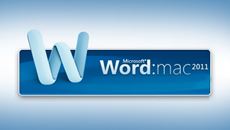- Delivery Method Online
- Professional Certificate
- 24hrs Suggested Study Time
- 3 Months Access
- Tutor Support
- Study On Any Device
- 147 Students
Final Cut Pro X Fundamentals

Make the leap from home video enthusiast to professional video editor using Apple's revolutionary Final Cut Pro X editing software.
Make the leap from home video enthusiast to professional video editor using Apple's revolutionary Final Cut Pro X editing software! Whether you're an absolute beginner, an iMovie user, or an editor needing to upgrade from a previous version of Final Cut Pro, this course will prepare you to work on any type of editing project quickly and intuitively.
We'll cover the FCPX interface and its basic editing toolset including its advanced handling of metadata, the Magnetic Timeline, the Ripple and Insert edit tools, filters, titles, transitions, and audio tools. We'll also explore many of its advanced features such as Auditions, Compound clips, color correction, masks, and Roles.
You'll discover every feature of the FCPX software via hands-on tutorials in which you'll edit footage to produce finished works that you can show to potential employers, family, and friends. Each lesson focuses on general editing techniques and strategies for many different kinds of projects involving dialogue, music video, documentary interviews, action sequences, and promotional video. Along the way, you'll develop essential skills that will make editing your videos fast, expert, and fun.
By the end of the course, you'll know how to edit professional video presentations for use on the Web, in education, for business, or for a career in the motion picture industry!
Course Revised March 2014
Courses are delivered to you through expertly executed lessons, online instruction and interaction with like-minded students. Our courses are designed to deliver all of the benefits of studying in a classroom whilst giving you the flexibility to study at a time and place to suit your needs. You can access your classroom 24/7 from any device with an internet connection.
This course has a 3 month duration. You'll complete comprehensive lessons, quizzes and assignments before submitting your final exam at the end of the course to achieve your certificate. Courses must be completed within the 3 month access period.

Lewis Weinberg
Lewis Weinberg is an independent filmmaker and professional videographer. His movies have been showcased at the Walker Art Center in Minneapolis, and screened at the Ann Arbor, Athens, Chicago Underground, Los Angeles, and Minneapolis Internationa... Read more
Read Lewis Weinberg's ProfileFrequently Asked Questions
What people are saying about our courses
The Learning Environment
From the moment that you enrol in the Final Cut Pro X Fundamentals you will become an integral part of our learning community. You'll find yourself with the freedom to learn at a speed that suits you, on any device, from anywhere in the world. Achieving your career goals no longer has to mean compromising family and work commitments.
Our Values
Learn At Your Own Pace
We believe in personalised learning. That's why we provide all the tools and support you need to succeed at your own pace. With flexible learning, you'll stay motivated and retain more information. Plus, you can balance your studies with work and family commitments to make your dreams a reality.
We Won't Break The Bank
Education should be accessible to anyone who wants to learn. That's why we offer some of the most competitive prices in the industry with payments plans for just $25 per week. Investing in your future is a smart choice and doesn’t have to break the bank.
Industry-Led Courses
There's no better way to learn than from experts with years of experience in your field. That's why each of our 200+ industry-led courses are designed to give you a real-life perspective on your industry. With our expert mentors, you'll learn from people who have a wealth of knowledge and experience, and who are passionate about sharing it with you.
Get The Personal Support You Deserve
At Vibe Learning, we're real people who are dedicated to providing you with personal support every step of the way. Our industry experts are not only professional and knowledgeable but also incredibly passionate about sharing their expertise with you. With their guidance, you'll gain invaluable insights and practical knowledge to help you succeed.
Still looking?
Check out the following courses related to Final Cut Pro X Fundamentals:


